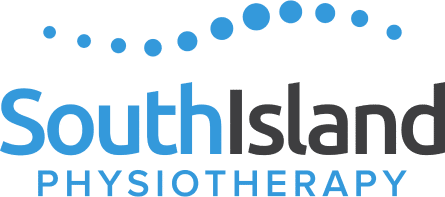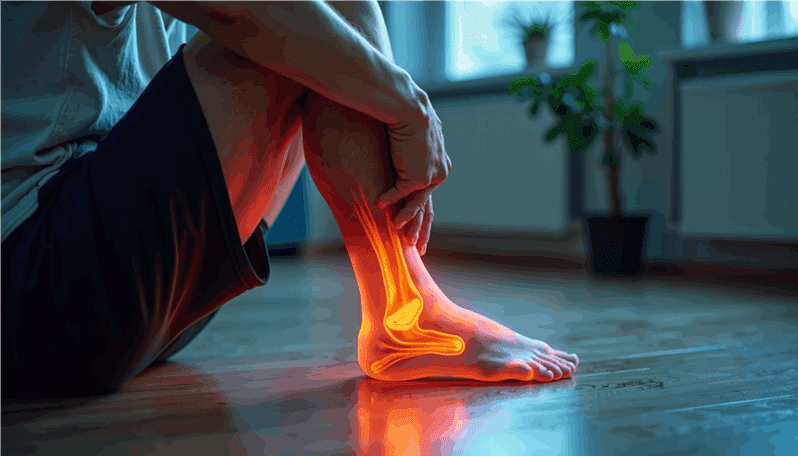Lasting Relief from Achilles Tendinitis Through Expert, Research-Backed Care
At South Island Physiotherapy in Victoria, BC, we believe injuries are opportunities—not setbacks. One of the most common tendon injuries we help patients recover from is Achilles tendinitis. Whether you’re dealing with a new injury or persistent Achilles tendon pain, this guide covers the current evidence-based treatments for both acute and chronic stages of recovery.
What Is the Achilles Tendon?
The Achilles tendon is the largest and strongest tendon in the body. It connects your calf muscle to your heel bone and plays a key role in walking, running, and jumping. This lower leg tendon absorbs large amounts of force—especially during sports or high-impact activities.
When this tendon becomes irritated or damaged, you may experience pain, swelling, or stiffness near the heel. These symptoms are typically grouped under the broader term Achilles tendinopathy.
Types of Achilles Tendon Injuries
- Achilles Tendinitis (Tendonitis)
Achilles tendinitis, sometimes spelled tendonitis, is an early-stage injury marked by inflammation in the Achilles tendon. It often results from overuse, sudden changes in activity, or poor biomechanics in the foot and ankle.
- Achilles Tendinosis
When tendon pain becomes chronic and the inflammation subsides, the tendon itself may begin to break down. This condition is called Achilles tendinosis and is associated with thickening, reduced blood flow, and changes to the tendon’s structure.
- Achilles Tendinopathy
This general term refers to any pain or dysfunction in the Achilles tendon, including both tendinitis and tendinosis. It’s the term most used in current sports medicine research and clinical guidelines.
- Insertional Achilles Tendinopathy
This form of Achilles tendinopathy occurs when the Achilles tendon attaches to the heel bone. Known as insertional Achilles, it may involve bony spurs and often feels worse when walking uphill or wearing unsupportive shoes.
- Achilles Tendon Rupture
In severe cases, the Achilles tendon can partially or completely tear—a condition called Achilles tendon rupture. This often occurs during explosive movements and may require a walking boot or surgical repair, followed by physical therapy.
Diagnosing Achilles Tendonitis and Tendinopathy
Diagnosis begins with a physical exam. Your physiotherapist will assess the range of motion, strength, and tenderness in the lower leg, heel, and ankle.
When needed, imaging such as magnetic resonance imaging (MRI) or ultrasound can confirm the extent of the damage or rule out a tendon rupture. However, most cases can be diagnosed and treated based on symptoms and function.
Evidence-Based Treatment: Acute Achilles Tendinitis
During the acute phase of Achilles tendinitis, the focus is on reducing inflammation, managing pain, and preventing further damage.
Activity Modification
Avoid aggravating movements like running or jumping. Replace them with low-impact activities such as swimming or cycling to stay active without straining the Achilles tendon.
Ice and Elevation
Apply ice to the painful area for 15–20 minutes several times a day. Elevating your lower leg can also help reduce inflammation.
Footwear and Orthotics
Supportive footwear with proper cushioning can take pressure off the heel and tendon. A heel lift or custom orthotic can provide short-term relief, especially for insertional Achilles issues.
Walking Boot (When Needed)
In more serious cases, especially where pain limits walking, a short-term walking boot may be used to offload the tendon and allow healing to begin.
Evidence-Based Treatment: Chronic Achilles Tendinopathy
If symptoms persist for more than six weeks, they’re considered chronic, and treatment shifts from rest to active rehabilitation. At South Island Physiotherapy, our team uses targeted physical therapy techniques backed by strong research.
Eccentric Strengthening Exercises
The gold standard for Achilles tendinopathy treatment is eccentric loading—slowly lowering the heel off of a step under body weight. This exercise strengthens the calf muscle and encourages tendon remodelling.
Examples include:
- Straight-leg heel drops (for the gastrocnemius)
- Bent-knee heel drops (for the soleus)
A typical program runs for 12 weeks and gradually increases in intensity.
Stretching
Tight calf muscles can put excess strain on the Achilles tendon. Gentle daily stretching of the calf and ankle helps improve flexibility and reduce tension on the tendon.
Manual Therapy
Hands-on treatment by your physiotherapist can improve joint mobility in the ankle and soft tissue quality around the tendon and heel.
Gradual Return to Sport
Your therapist will help you build a step-by-step plan to return to running or sport safely, using low-impact activities first and progressing based on tendon tolerance.
Advanced and Adjunctive Treatments
Shockwave Therapy
Some research supports extracorporeal shockwave therapy (ESWT) for chronic Achilles tendinopathy. It may improve pain when used alongside exercise therapy.
Injections and Surgery
Corticosteroid injections are not commonly used due to the risk of tendon rupture. In rare, stubborn cases where conservative care fails, surgical treatment may be considered.
Preventing Achilles Tendon Injuries
Even after recovery, it’s important to protect your Achilles tendon and avoid re-injury. Here’s what you can do:
- Warm up before activity and cool down after
- Progress training loads slowly—no more than 10% increase per week
- Regularly strengthen your calf muscles
- Stretch daily to maintain range of motion
- Use proper shoes and orthotics if advised
- Include low-impact activities like biking or swimming in your routine
When to Seek Help
If you’re experiencing persistent heel or ankle pain, don’t wait. The sooner Achilles tendinitis or tendinopathy is treated, the better the outcome. At South Island Physiotherapy, we provide tailored physical therapy programs rooted in sports medicine principles and designed to help you move freely and confidently again.
Ready to Start Healing?
Achilles tendon pain can slow you down—but with the right support, it doesn’t have to stop you. Whether you’re managing acute tendonitis or chronic Achilles tendinopathy, our team is here to help you recover through education, strengthening exercises, and movement-focused care.
Book an appointment at South Island Physiotherapy today, and let’s get you back to doing what you love—pain-free and stronger than ever.

